How to use third-party delivery services: Pros and cons
Delivery services have long been a part of the restaurant industry, and they’ve really taken a leap lately. Consider how long delivery pizza has been a staple, and you’ll quickly grasp just how ingrained in restaurant culture it is. But with the rise of third-party delivery services, restaurateurs have much more to consider regarding food delivery than they previously have, including some notable pros and cons.
Questions lingered about whether or not the surge in takeout during the pandemic was here to stay. Well, the numbers are in, and you can be darn sure that customers will continue to place orders via third-party delivery platforms.
But restaurant delivery can seem like a complicated business. So can figuring out the best way to do it while still remaining profitable. So, we’re here to help restaurant owners figure out just how to navigate third-party delivery services.
Let’s weigh the benefits and drawbacks of third-party delivery apps, discuss how to get started with delivery apps, and explore this skyrocketing sector of the restaurant industry.
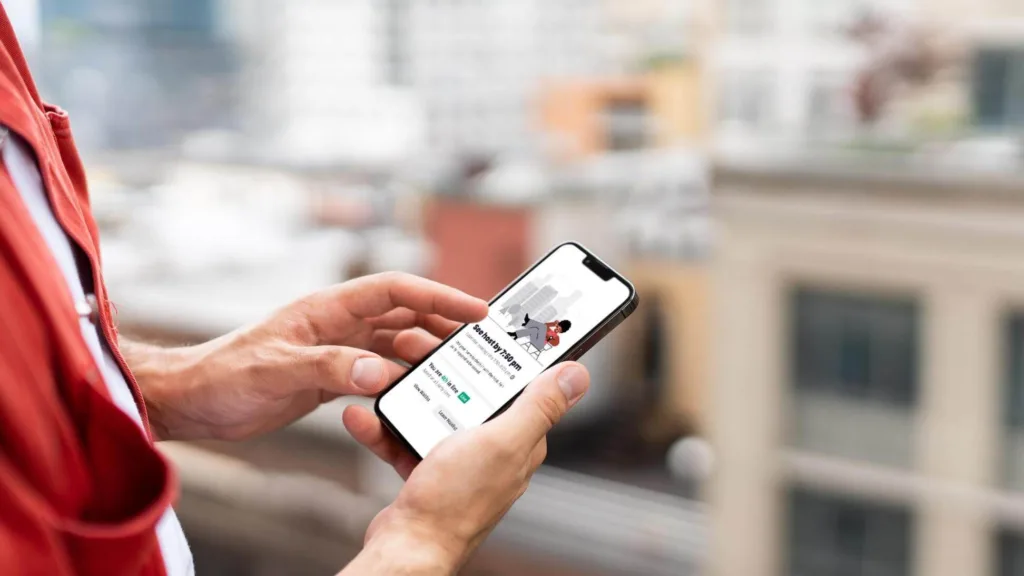
The current situation in numbers
According to McKinsey and Morgan Stanley research, the food delivery revenue stream exploded in the U.S. between 2015 and 2020—from $8.7 billion to a whopping $26.5 billion. Users grew from roughly 65 million in 2015 to more than 110 million during the same time frame in 2020. So, while the customer base nearly doubled, the money customers spent on delivery food more than tripled—demonstrating that not only are there more customers wanting delivery food, but they’re willing to spend more than before.
And remember, that was pre-pandemic. Things accelerated significantly after that. More recent studies predict that the industry will climb to north of $50 billion by 2027.
There has been significant consolidation in the apps as well. As of December 2021, DoorDash claimed the lion’s share of the delivery market at 58%, while Uber Eats and Grubhub came in at 24% and 15%, respectively. Postmates claimed a modest 3% before it was acquired by Uber and absorbed into Uber Eats in November 2020.
Combine those four services and you’re looking at nearly 100% of the third-party delivery service market. While these companies jockey for position, their fortunes wax and wane with the preferences of customers.
At the same time, some 78% of delivery orders in 2019 were still placed directly through restaurants themselves rather than third-party vendors. This is promising news for restaurants considering forming their own delivery team, but the numbers are shifting in favor of third-party apps.
A more recent 2021 survey indicated 57% of customers used mostly or all in-house apps versus third-party. And a Deloitte survey showed that 57% of customers prefer ordering on an app, though they don’t specify in-house or third party. Furthermore, 61% of customers order takeout or delivery once a week—a significant increase.
Now, while there may be some contradictory numbers here, the most important takeaway is that customers across the board are ordering delivery and takeout more often, and rely on apps more than ever.
We can be sure in-house delivery or takeout apps are valuable. But should restaurants partner with third-party delivery services or rely on in-house delivery services? What’s the best way forward?
You likely won’t be surprised when we answer our own rhetorical question with, “Well, it depends.” Let’s find out what it depends on and then look at how to set up delivery services.
Pros of third-party delivery services
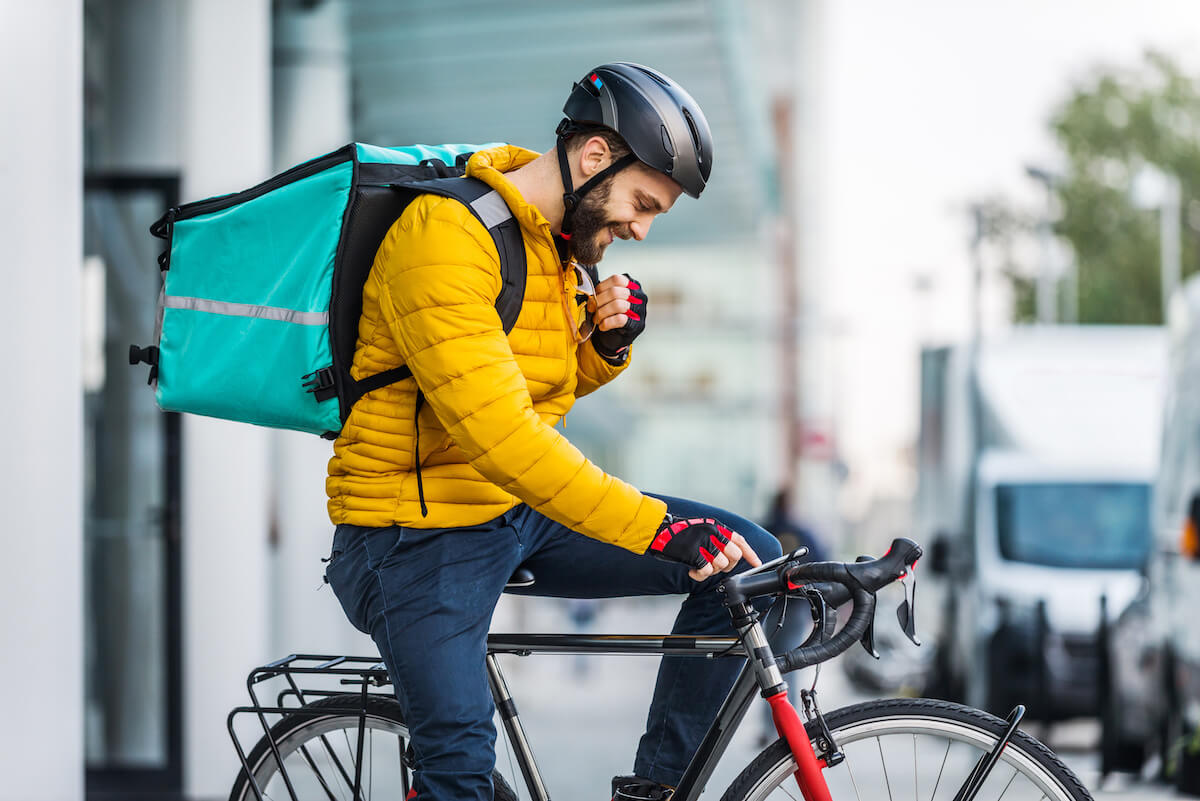
For the purposes of this article, we’ll refer to third-party delivery services as one general concept rather than point to individual ones. For reference, Yelp has partnerships with Grubhub, Delivery.com, ChowNow, and EatStreet—but we’re not getting into the specifics of individual services here.
Let’s start with the pros of third-party delivery services—there are plenty.
Increased visibility and new customers
Third-party delivery services provide more visibility for a restaurant. Customers who have never heard of your restaurant may have their curiosity piqued by seeing it on an app. Having your business’s name appear on an app is a good way to let people know that you’re in the neighborhood and you can be trusted.
In the long run, this can ideally make a regular customer out of someone who would otherwise be a stranger. A solid delivery experience via a third-party service can lead to further in-house dining, more delivery, and generally more business.
A built-in delivery platform
If you’re running a relatively small operation or you’re already short on labor, organizing your own delivery service can be a headache and strain limited resources. By relying on third-party delivery companies, you can expand your business by simply giving up a cut of your profits. For a restaurant with high profit margins, online ordering via apps can significantly boost business without necessarily tanking said profit margins.
Hiring and managing delivery drivers can be time-consuming. By using a third-party service, restaurant operators are essentially outsourcing their entire delivery operation. Sure, it costs money in the form of delivery fees, but in-house delivery staff also cost money—in salary, reimbursed gasoline, insurance, and more.
Seamless integration with POS systems
Many delivery platforms integrate seamlessly with point-of-sale (POS) systems—which in turn integrate with Yelp’s FOH software suite. For those running startup restaurants or otherwise new to the industry, this can take a lot of the guesswork out of delivery options.
On top of that, the mountain of customer data gained and managed by software like Yelp’s can help restaurant operators make informed decisions regarding all aspects of their business, especially regarding customer preferences and choices.
Appeal to the tech-native crowd
It may not shock you to learn that the younger crowd is more comfortable with online app ordering compared to older people. So, if you’re trying to entice young adults to order your food more, making their choice as simple as pushing a few buttons on their phone can certainly increase your popularity. The simplicity of app-based food delivery options is one of the prime incentives for the service, as it generally minimizes confusion.
Expanding the capacity of your dining room
Small businesses in the restaurant industry have limited seating. This is a simple fact of life, and business turned away is lost income. By allowing customers to order via food delivery apps, business owners essentially expand their dining capacity infinitely—as long as the kitchen can keep up without getting overwhelmed.
The ghost kitchen model has been helpful for restaurants with the ability to further outsource their delivery needs to an off-premise location.
Cons of third-party delivery services
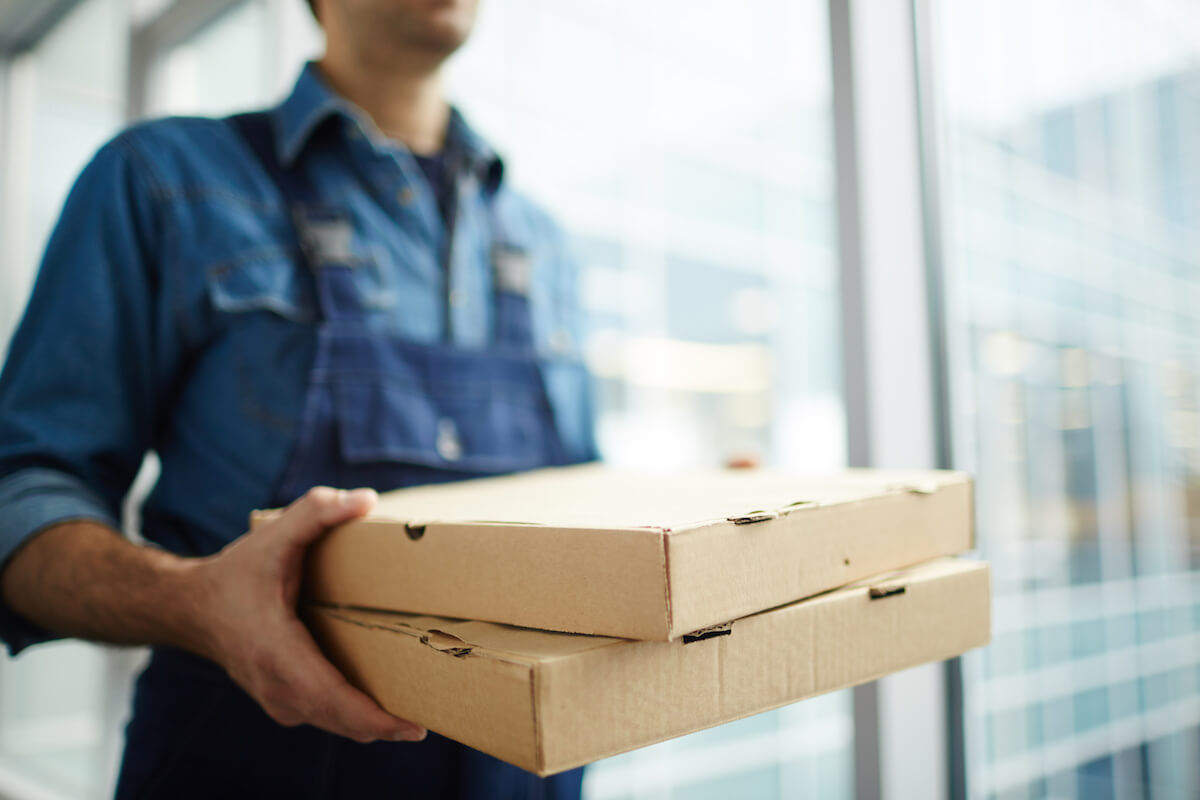
Naturally, third-party delivery services need to make money too. Working with them comes with costs, just like working with any other service provider.
Commission fees
Perhaps the most common complaint restaurant operators have about third-party delivery services is the high fees they often command.
As an example, Uber Eats charges restaurants between 15–30% of their sales as a service fee depending on what plan the restaurant chooses in their partnership. For restaurants already operating on a thin profit margin, this may be an unacceptably high cost. If you’re losing money on an order, it doesn’t make any sense at all to even offer third-party delivery.
Loss of control over the delivery process
Outsourcing your delivery to a third-party provider means you don’t get to see the process the whole way through. In the restaurant industry, appearance matters a great deal, as does the handling of food.
If there’s some error in the delivery process—whatever it may be—there’s a significant chance customers will blame the restaurant for the problem. This is largely an image problem, and it’s not one that restaurants will be in control of should something go wrong with the customer’s experience.
Now, generally, third-party services do their jobs well, or they wouldn’t be in business. But for restaurateurs who like to ensure the small things are done right, giving up this degree of control may not be something they enjoy.
Choosing a food delivery service
Simply doing the research to choose which service to partner with may prove to be too much hassle for some restaurant operators. With competing organizations and a host of unknowns, business owners may find they don’t have the time to figure out which partner is right for them. This may lead some to give up before they even end up becoming a partnered restaurant.
How to work with third-party food delivery services
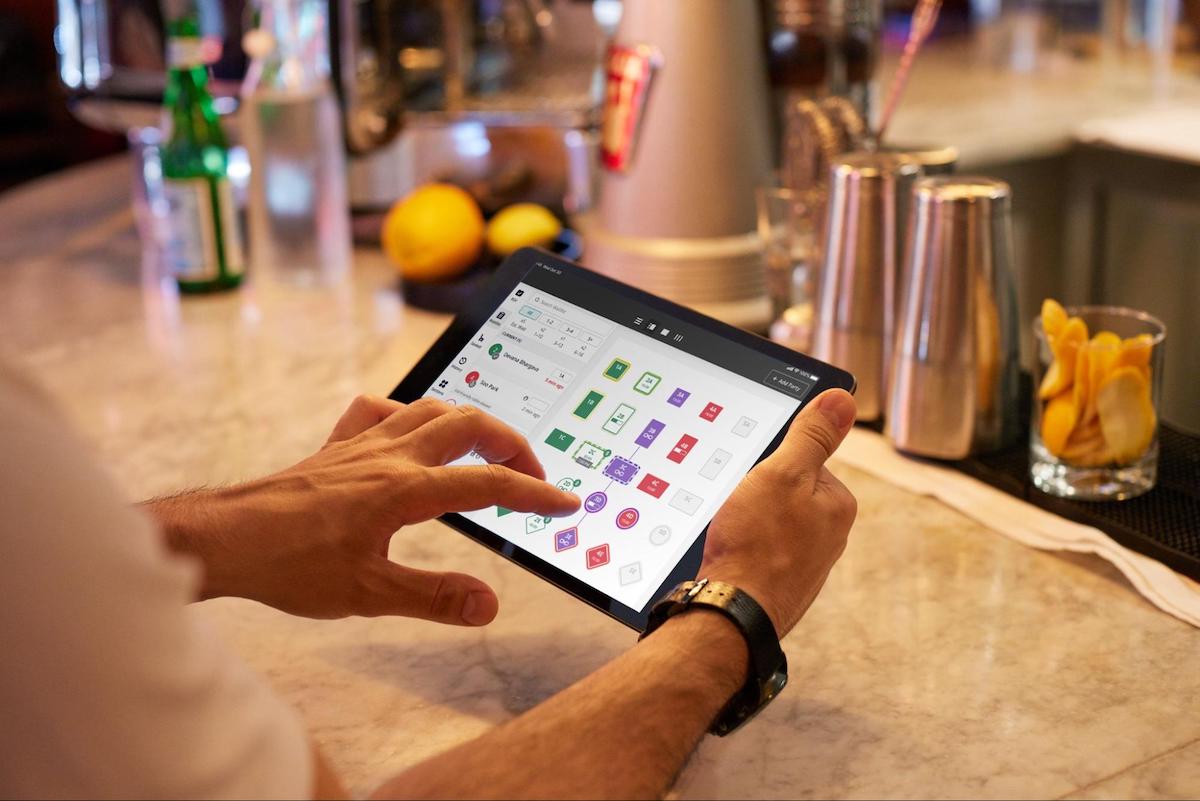
If you intend to make third-party delivery apps a part of your business, there are several steps you can take to ensure things go smoothly. Let’s take a look at five actionable steps.
1. Assign dedicated delivery prep staff
Having in-house orders and delivery orders create bottlenecks in the kitchen and at the host stand is a good way to lose customers on both ends. Hiring additional staff like an expo or a host dedicated specifically to delivery can be an excellent way to prevent those bottlenecks and get delivery orders out fast.
Timeliness of delivery is critical just like timeliness of service in a restaurant. For reference, the Deloitte survey noted 75% of customers believe a 30-minute wait for deliveries is acceptable. Similarly, two-thirds expect the same amount of freshness and quality as they’d get in the restaurant.
2. Get your packaging right
Getting packaging right for delivery is one of the most important aspects of the business. That means ensuring meals stay fresh and looking nice—and, obviously, not spilling all over the place. We’ve all seen photos of sad pizzas that have been held the wrong way with all the topping sliding off. That’s a great way to have customers slide off into the void, too.
This idea ties back in with your specialized delivery prep staff. Through experience and training, they’ll be able to make the best use of the packaging you offer. And hey, while we’re at it, consider sustainable packaging, too, since many customers indicate they’re happy to pay a bit extra for Earth-friendly materials.
3. Leave parking space for delivery drivers
Delivery drivers will be coming in and out often for deliveries if your business is popping off. So, having dedicated parking spaces for those delivery drivers will help ensure seamless deliveries without inconveniencing regular guests.
Marking specific spots for drivers is a good way to do this. Of course, it all depends on your physical location. Whatever the case, make sure the drivers don’t have to walk a long way, especially since this can be inconvenient in inclement weather.
4. Have a system at the front for delivery
Make it quick and simple for couriers to check in and pick up orders. Some restaurants do a shelving unit with alphabetized rows to sort orders by name. Some have a separate line for takeout pickup. Either way, a clear delivery pickup system makes people’s lives easier and helps your restaurant run more efficiently.
It’s not just to impress the delivery drivers either—when customers order their own takeout to pick up themselves, your system will make a strong impression on them. If they get to go in a quicker line and get back to their couch sooner, chances are high that they’ll become a regular.
5. Make payment painless
Many third-party delivery apps already make payment easy with credit cards, gift cards, or other payment methods. Just make sure your business is ready to handle such options and keep good records. Luckily, when you’re working with Yelp Guest Manager, you won’t have to worry about that.
6. Ensure open lines of communication
Sometimes things go wrong in deliveries. It’s bound to happen. Whether this comes in the form of incorrect or missing items, cold food, or more, it’s often the business that takes the blame even if it’s not their fault.
So, making sure you keep in touch with customers is key. Sending a follow-up text or email can be a great way to address problems before they get out of hand. Should an order go wrong, even if it’s not your fault, make sure you get the right order out to the customer pronto and for free. You might decide to comp the meal or not, but take care of it swiftly to turn a potentially upset customer into one that comes back.
Most diners will deal with this mistake right in the app. There are typically “Help” buttons where they can address the issue. For example, if a drink is missing, they can choose to get an immediate refund from the app. Another benefit of delivery apps—the customer gets cared for without you needing to field a phone call on a busy night.
Taking the sting out of delivery
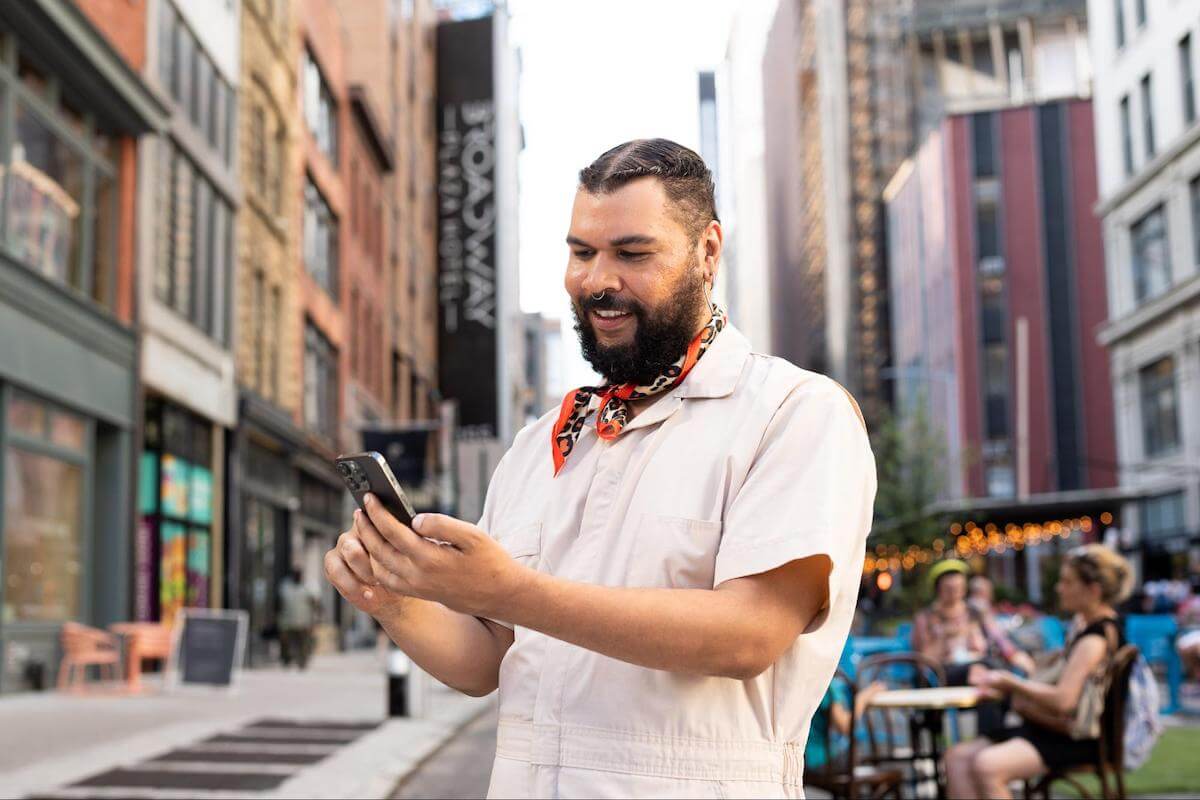
At Yelp, we’re keenly aware of the many dilemmas facing restaurant operators. We’ve simplified a complex task by creating our own partnerships with third-party delivery services to take one extra item off your to-do list.
With our full-speed, full-service Yelp Guest Manager, you can be sure that your delivery options are fully up-to-date and meet your customers’ demands—whatever they may be. Whether it’s takeout, delivery, dine-in, reservations, or check-ins, we’ve got you covered. When you use Yelp Guest Manager, delivery apps are integrated seamlessly so diners can place an order without having to leave your Yelp page.
Want to take our software for a test drive and see if it’s right for you? Reach out to us for a quote and we’ll be thrilled to connect. It’s a competitive world, and we want to help our partners shine.